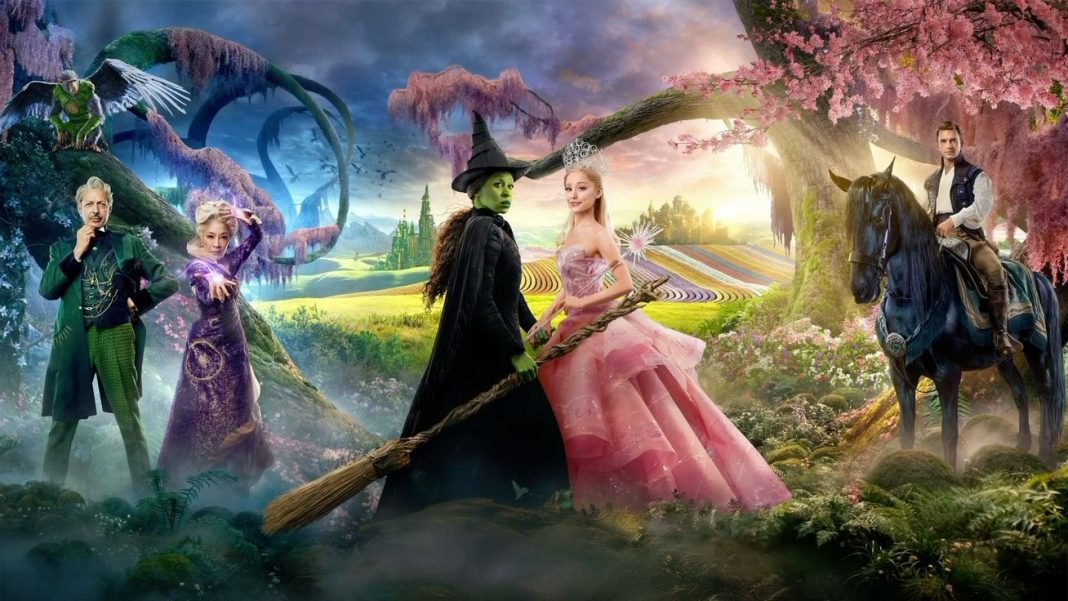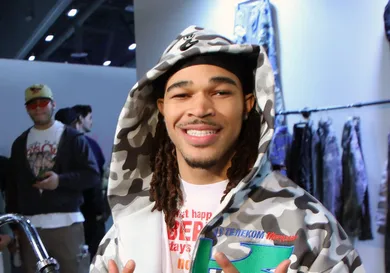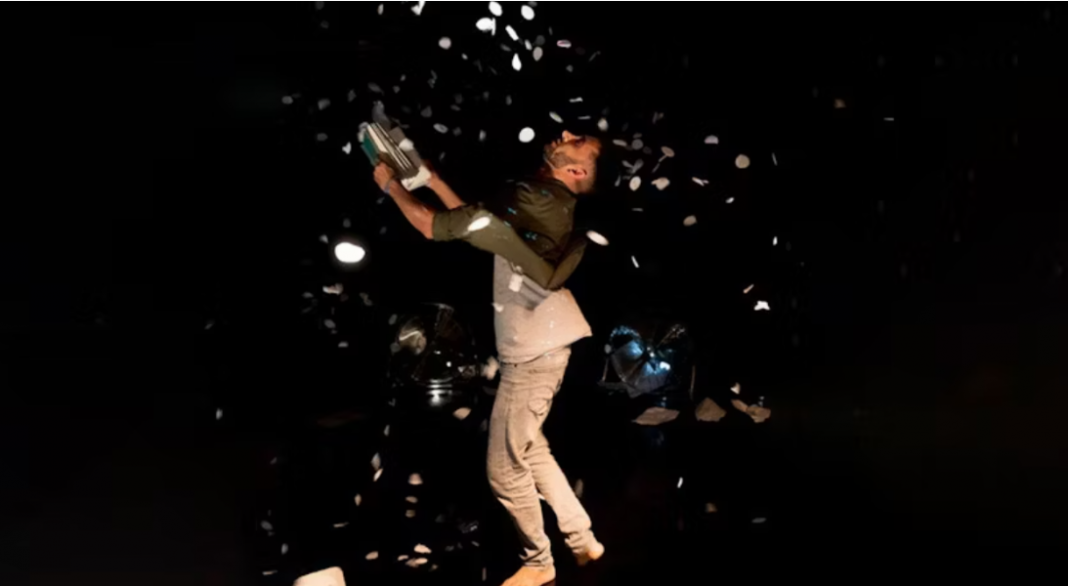Jon M. Chu’s Wicked was among the most popular and acclaimed movies of 2024, and one of its clearest strengths as a musical is the rich, intricate dance numbers that constantly help push the story forward. There are eleven songs in total in Wicked, and each one serves a specific purpose regarding the characters and their respective journeys. Songs like “Popular” and “What Is This Feeling” help develop the dynamic between Elphaba and Glinda, while songs such as “One Short Day” and “Something Bad” expand the history of Oz and push the narrative forward.
The majority of these songs come with large-scale dance numbers that pay homage to the original stage musical while changing things slightly for a more cinematic experience. Chu does an excellent job of bringing a new life to these songs, referencing the source material through his choreography and even foreshadowing things that will happen in Wicked: For Good.
Something Bad

“Something Bad” is one of the few songs in Wicked that doesn’t have any kind of dance choreography, but that’s likely because of its dark content and foreboding atmosphere. The song appears shortly before Elphaba’s departure for the Emerald City, as she learns that something terrible is happening to the animals in Oz.
Although it doesn’t rank among the highlights of Wicked’s soundtrack, “Something Bad” is an important moment in the story that helps give purpose to Elphaba’s decision at the end of the film. The lack of dance choreography is made up for by the ominous use of shadows and atmospheric storytelling, which Erivo and Dinklage capture perfectly.
A Sentimental Man

Another song that doesn’t feature much dance choreography at all, “A Sentimental Man” is one of the film’s last songs before the grand “Defying Gravity” finale. The lyrics seemingly explore how the Wizard came to his position as the ruler of Oz, though its ironic tone and suspicious language reveal something more sinister about his character. The song represents one of Wicked’s major turning points, and it’s the final piece of calm before the inevitable storm.
Although Wicked makes some adjustments and improvements to “A Sentimental Man” for the screen, there still isn’t much dancing to be seen. The song is performed solely by Goldblum’s antagonist, and while the actor brings huge amounts of charm to this piece of music, it ultimately doesn’t stand out among the rest.
Dear Old Shiz

“Dear Old Shiz” is often criticized for being one of the weaker songs in Wicked, but it clearly serves a purpose in establishing Glinda’s character. It comes very early in the story, and it’s the moment that audiences are first introduced to Glinda in the past. There’s an argument to be made that Glinda is the most important character in Wicked (at least the first part), so her early scenes in Shiz are hugely important. That being said, the song itself doesn’t really feature any dance choreography – but at least there’s a large ensemble.
I’m Not That Girl

“I’m Not That Girl” is a pivotal moment towards the middle of Wicked, told from Elphaba’s perspective as she reckons with her romantic feelings for Fiyero and her jealousy of Glinda’s effortless popularity. It’s a crucial song that really speaks volumes to Elphaba’s character, and the film does a great job of capturing her isolation by placing her in the background of these scenes and framing her just outside the rest of society.
The love triangle between Elphaba, Glinda, and Fiyero is a huge part of Wicked’s narrative, and “I’m Not That Girl” is the moment that Elphaba finally recognizes her own role in this dynamic. The cinematography is rich and powerful, as the character watches her two friends from the shadows and tries not to get involved. There’s no dancing as such, but the choreography does a great job of exploring how Elphaba views herself as external to the rest of the students.
Defying Gravity

“Defying Gravity” is a crucial moment in Elphaba and Glinda’s friendship, as the pair are forced to realize that their roles in this story cannot be the same. Elphaba is much too ambitious and moral to remain in Oz with the Wizard, and Glinda is too proud to stand against him and risk her reputation. It’s a hugely powerful finale, and while there’s little dancing in the scene, it’s choreographed excellently to display this push-and-pull between Wicked’s main characters.
“Defying Gravity” is much longer in Chu’s film than in the original Broadway production, and this leaves space between the verses for important character moments, such as the pair’s escape on the hot air balloon and Elphaba’s decision to enchant the broom and fly away. These moments exist in “Defying Gravity” in place of the large dance numbers of some other songs, and it gives the scene a much grander feeling of narrative importance.
The Wizard and I

“The Wizard and I” is arguably Wicked’s first huge musical number, and it’s an extremely important one. The song comes shortly after Elphaba’s arrival at Shiz and details her lifelong dream to meet the Wizard, but her words are laced with foreshadowing as the audience already knows from “No One Mourns The Wicked” that her relationship with the Wizard will ultimately be one of pain.
The choreography in “The Wizard and I” is much subtler and more individual than some of Wicked’s larger dance numbers, but it does a great job of developing Elphaba’s character through her body language and some keen cinematic tricks. For example, the moment in which the green of Elphaba’s face is concealed by a stained-glass windchime is extremely poignant, relating her love for the Wizard to her desire to be “cured.”
Popular

“Popular” is Glinda’s most important song in Wicked, and it’s arguably the height of Ariana Grande’s physical performance in the movie. The way she moves and sings in “Popular” reveals so much about her character, from her superficiality to her growing fondness for Elphaba. It’s another huge turning point in their relationship, and the choreography reveals just how excited Glinda is to be able to share her expertise with a new friend.
However, the sharp humor of “Popular”’s lyrics are also laced with an ominous foreshadowing. It’s ultimately Glinda’s obsession with being well-liked and respected that forces her to stay behind at the end of the movie, unwilling to risk her reputation for the greater good. Her poised movements and vain glances in the mirror in “Popular” reveal this about her character long before this pivotal finale.
No One Mourns The Wicked

“No One Mourns The Wicked” is Wicked’s first musical number, and it’s the perfect way to begin this story. Opening with a flash-forward helps audiences understand where these characters will ultimately end up, with Elphaba “dead” and Glinda working for the Wizard, which gives a whole new dimension to their actions in the rest of the film.
The choreography itself is some of Wicked’s most sweeping and absorbing, with the residents of Munchkinland using their huge numbers to maximum effect. It’s dynamic and exciting in all the ways that an opening song should be, though Ariana Grande is actually the underdog of this piece with her multi-layered performance that takes on a new meaning following Wicked’s ending.
What Is This Feeling

The rivalry between Elphaba and Glinda is definitely the highlight of Wicked’s first half, and “What Is This Feeling” perfectly summarizes this dynamic. It’s one of the movie’s funniest songs, with plenty of humorous insults thrown between the two characters, but it’s still very lighthearted thanks to the lively and upbeat dance choreography.
What’s most interesting about “What Is This Feeling” is how it presents the physicality of Elphaba and Glinda’s relationship in a totally different way to “Defying Gravity.” Here, they’re constantly pushing away from each other and their movements are extremely sharp, whereas later songs have them performing together and bouncing off each other with their warm chemistry.
One Short Day

“One Short Day” is the song that marks Elphaba and Glinda’s arrival in the Emerald City, and it’s one of Wicked’s most upbeat and positive songs – despite the tragedy that’s not too far behind. It’s poppy and catchy, and everything about the choreography represents that, with plenty of background dancers and dynamic camera movements to capture the characters’ sense of awe.
This song also features a major alteration from the Broadway production, with Idina Menzel and Kristin Chenoweth making musical cameos and explaining some of the lore behind the Wizard and his magical Grimmerie. Their involvement helps separate this version of “One Short Day” from the original cast recording, and their brief roles help to seamlessly further the story.
Dancing Through Life

Although Jonathan Bailey’s Fiyero only gets one song in Wicked’s first part, it’s easily the standout of the entire movie. His rendition of “Dancing Through Life” is so charming and well-choreographed, with intricate set design and dynamic camera work helping to make his entire performance feel alive.
One of the most fascinating aspects of the choreography in “Dancing Through Life” is how clearly it foreshadows Fiyero’s transformation in Wicked: For Good. His loose movements and carefree dancing style is very similar to “If I Only Had A Brain” from The Wizard of Oz, which obviously teases the fate that’s in store for him.






